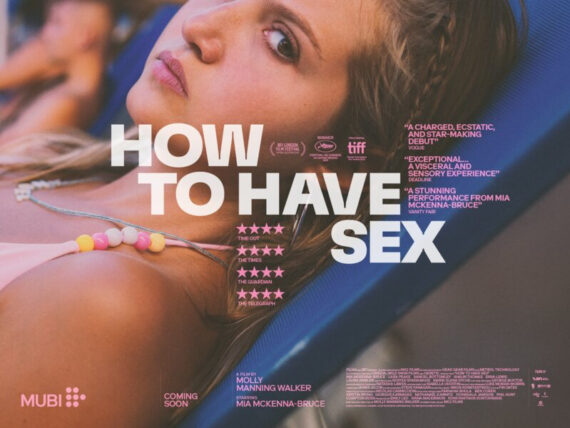Regular contributor Nigel Watson reviews Professor Marston and the Wonder Women, which screened at the Plymouth Arts Centre cinema from the 13 – 21 March 2018. *Please note – this review contains mild spoilers.*
It is quite surprising to learn that the hugely popular Wonder Woman super heroine was created by Professor William Marston. He was a psychologist and the inventor of a prototype lie detector machine and is not the type of person you would associate with scripting frivolous comic books.
This film explores how this came about when William is brought before the Child Study Association of America in 1945, to justify the violence and blatant sexual imagery depicted in his Wonder Woman stories.
By means of flashbacks, William who is charmingly played by Luke Evans is revealed to be a popular professor at Radcliffe College in Cambridge, Massachusetts. Founded as a liberal arts college for women as a counterpoint to the all-male Harvard College, Radcliffe was the ideal setting for William to articulate his support of feminism and liberation.
William is married to the worldly and cynical Elizabeth portrayed by Rebecca Hall who is angry that even with a PhD the opportunities for her are restricted, because she does not have a ‘cock.’
At first, the couple observe one of his students, Olive Byrne played by Bella Heathcote, as if she is a laboratory subject. William and Elizabeth agree that her beauty is like a handicap that attracts her to men and makes other women jealous. Both of them are fascinated by her and want to discover more about her.
The Marston’s relationship with Olive becomes more intense when she agrees to be William’s laboratory assistant. Olive inspires them to make improvements to his lie detector machine, and her input enables it to work properly. As part of William’s DISC theory studies Olive is persuaded to join in the activities of ‘The Baby Party’ where freshmen girls at the college have to dress like babies and be punished for any form of disobedience.
Based on his observations, William believed that so-called normal people displayed four primary behavioural traits: Dominance, Inducement, Submission and Compliance (DISC). How people perceive, and are influenced by these factors, determines how they relate to their experiences and relationships.
Self-effacing Olive is shocked by Elizabeth’s outspoken behaviour, but soon becomes attracted to her and to William as well. After Olive helps them fix the lie detector machine, they test it out on each other causing its twitching recording arm to indicate all three are in love with each other. Upon this realisation, William, Elizabeth and Olive set up house as a polyamorous relationship.
When rumours circulate around the college about their unusual relationship, they are fired. Forced to start over again, the threesome must find ways to assimilate their unusual lifestyle in a ‘normal’ neighbourhood and in average Joe jobs. Despite his quest for normalcy, at least in appearance, William accidentally discovers the pleasures of bondage at a costume shop run by Charles Guyette, who famously introduced fetish art to the USA. William buys a collection of sadomasochistic images from Charles and proudly shares them with Olive and Elizabeth. He says the pictures show different aspects of his DISC theory. Elizabeth is not impressed and calls it pornography.
As William continues to struggle to make a living as a writer of self-improvement books, he comes up with the idea of a Wonder Woman heroine who can be an inspiring role model for children. In these stories, he incorporates elements of his own life into his female superhero. For example, the image of Wonder Woman is in fact based on Olive, her ‘invisible’ aircraft is based on a glass aircraft model given to him by Olive and Elizabeth, and he incorporates his beloved DISC theories and how they relate to bondage into the mix.
Rather than being about the creation of the comic book Wonder Woman, Angela Robinson’s film deals with how William celebrates and embraces Wonder Women, specifically Olive and Elizabeth, who like all women are dominated by a masculine society that has rigid social barriers.
Robinson uses the essential message of William’s Wonder Woman (and Wonder Women) to explore the pleasures, pains, boundaries and freedoms in the theatre of life. Indeed, his lie detector machine shows that what we say is not what we unconsciously believe or feel. We have to conform and act to be accepted in society or in close personal relationships; whereas in the act of creation or play acting, we can explore who we really are. Underlining this we are shown the three of them dressing up and embracing each other for the first time, on the theatre stage at Radcliffe College.
The film is not meant to be a drama-documentary designed to give us factual information about William’s life, theories, inventions or writing. Instead, Robinson uses their story as a useful starting point to address the issue of sexual desire and relations beyond the standard perceptions of the heterosexual society and the ‘nuclear family’ that dominated the US in the 1940s and is still in many quarters regarded as the norm.
The actors give a sympathetic portrayal of people coping with a world that does not understand them. They can only deal with the situation by living secret lives or through the despised medium of the comic strip, with the hope that future generations will be more understanding.
Robinson depicts the story in a sensitive manner that is never gratuitous or exploitative, like the film’s characters, it draws us into understanding non-conformist love and desire.
Nigel Watson








Comments
Comments are closed.